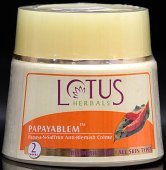Crocus sativus: 2 definitions
Introduction:
Crocus sativus means something in Hinduism, Sanskrit, biology. If you want to know the exact meaning, history, etymology or English translation of this term then check out the descriptions on this page. Add your comment or reference to a book if you want to contribute to this summary article.
In Hinduism
Ayurveda (science of life)
Cosmetics, Perfumery, Skin care and other Ayurvedic Beauty treatments
Source: Ancient Science of Life: Critical review of Ayurvedic Varṇya herbsCrocus sativus (Sanskrit: kesara) is the name of a medicinal plant used in Ayurveda to promote skin care and enhance the beauty of the skin (varṇya).—Commonly known as saffron, Crocus sativus is a well-known complexion promoter as per the texts of Ayurveda. Two clinical trials had established anti-pruritic and complexion promotion effects of saffron. It has been reported to contain more than 150 carotenoid compounds including safranal, zeaxanthin, lycopene and various α- and β-carotenes along with a rich source of riboflavin. The methanolic extracts of Crocus sativus flower has shown increased tyrosinase inhibitory activity with increasing concentration, i.e., from 10.78 at concentration of 50 µg/ml to 28.22 at 1000 µg/mL along with having antioxidant activity due to presence of cyanidins. In another study, kaempferol isolated from the petals of Crocus sativus has been found to inhibit the oxidation of L-3,4-dihydroxyphenylalanine (L-DOPA) catalyzed by mushroom tyrosinase with an IC50 value of 67 µg/mL thus exhibiting skin whitening potential.

Āyurveda (आयुर्वेद, ayurveda) is a branch of Indian science dealing with medicine, herbalism, taxology, anatomy, surgery, alchemy and related topics. Traditional practice of Āyurveda in ancient India dates back to at least the first millenium BC. Literature is commonly written in Sanskrit using various poetic metres.
Biology (plants and animals)
Source: Google Books: CRC World Dictionary (Latin names; Binomial nomenclature)Crocus sativus L. is the name of a plant defined in various botanical sources. This page contains potential references in modern medicine, Ayurveda, and other local traditions or folk medicine. It has the following synonyms: Crocus autumnalis Sm., nom. illeg., Crocus autumnalis Brot., Crocus autumnalis Vis. ex Steud., Crocus autumnalis Mill., Crocus autumnalis Ker Gawl., Crocus officinalis (L.) Honck., Crocus orsinii Parl., Crocus pendulus Stokes, Crocus sativus var. cashmerianus Royle, Crocus sativus var. officinalis L., Crocus sativus var. orsinii (Parl.) Maw, Crocus setifolius Stokes, Geanthus autumnalis Raf., Safran officinarum Medik..
References regarding Crocus sativus L. for further research on medicinal uses or toxicity:
· Species Plantarum (1753)
· Gardeners Dictionary, ed. 8 (1768)
· Irid. Gen. (1827)
· Illustrations of the Botany of the Himalayan Mountains (1834)
· Nomenclator Botanicus (1840)
· Fl. Ital. (1860)
· Gard. Chron. (1879)
· Regnum Vegetabile, or ‘a Series of Handbooks for the Use of Plant Taxonomists and Plant Geographers’ (1993)
· BMC Complementary and Alternative Medicine (2004)

This sections includes definitions from the five kingdoms of living things: Animals, Plants, Fungi, Protists and Monera. It will include both the official binomial nomenclature (scientific names usually in Latin) as well as regional spellings and variants.
See also (Relevant definitions)
Partial matches: Crocus.
Full-text (+164): Kunkuma, Kesara, Jaguda, Zafran, Pishuna, Dhira, Raja, Ghusrina, Agnishekhara, Kusumatmaka, Maralukam, Kashmirajanma, Kruku, Khoongoomapoo, Kesaram, Zaafaran, Varenya, Ruchira, Ashrika, Shankocha.
Relevant text
Search found 5 books and stories containing Crocus sativus; (plurals include: Crocus sativuses). You can also click to the full overview containing English textual excerpts. Below are direct links for the most relevant articles:
Cosmetics, Costumes and Ornaments in Ancient India (by Remadevi. O.)
1.5. Use of Kuṅkuma (Saffron) < [Chapter 1 - Cosmetics]
Indian Medicinal Plants (by Kanhoba Ranchoddas Kirtikar)
Brihat Samhita (by N. Chidambaram Iyer)
Kautilya Arthashastra (by R. Shamasastry)
Chapter 17 - The Superintendent of Forest Produce < [Book 2 - The duties of Government Superintendents]
The Great Chronicle of Buddhas (by Ven. Mingun Sayadaw)
Part 4 - The Birth of the Bodhisatta < [Chapter 1 - The Jewel of the Buddha]
Related products
(+16 more products available)





